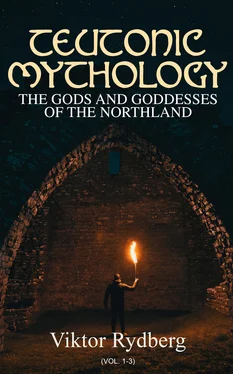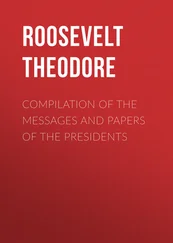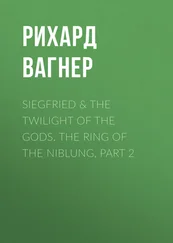| Germany, |
31.80% blonde, 14.05% brunette, 54.15% mixed. |
| Austria, |
19.79% blonde, 23.17% brunette, 57.04% mixed. |
| Switzerland, |
11.10% blonde, 25.70% brunette, 61.40% mixed. |
Thus the blonde type has by far a greater number of representatives in Germany than in the southern part of Central Europe, though the latter has German-speaking inhabitants. In Germany itself the blonde type decreases and the brunette increases from north to south, while at the same time the dolicocephalous gives place to the brachycephalous. Southern Germany has 25% of brunettes, North Germany only 7%.
If we now, following the strict rules of methodology which Latham insists on, bear in mind that the cradle of a race- or language-type should, if there are no definite historical facts to the contrary, especially be looked for where this type is most abundant and least changed, then there is no doubt that the part of Aryan Europe which the ancestors of the Teutons inhabited when they developed the Aryan tongue into the Teutonic must have included the coast of the Baltic and the North Sea. This theory is certainly not contradicted, but, on the other hand, supported by the facts so far as we have any knowledge of them. Roman history supplies evidence that the same parts of Europe in which the Teutonic type predominates at the present time were Teutonic already at the beginning of our era, and that then already the Scandinavian peninsula was inhabited by a North Teutonic people, which, among their kinsmen on the Continent, were celebrated for their wealth in ships and warriors. Centuries must have passed ere the Teutonic colonisation of the peninsula could have developed into so much strength—centuries during which, judging from all indications, the transition from the bronze to the iron age in Scandinavia must have taken place. The painstaking investigations of Montelius, conducted on the principle of methodology, have led him to the conclusion that Scandinavia and North Germany formed during the bronze age one common domain of culture in regard to weapons and implements. The manner in which the other domains of culture group themselves in Europe leaves no other place for the Teutonic race than Scandinavia and North Germany, and possibly Austria-Hungary, which the Teutonic domain resembles most. Back of the bronze age lies the stone age. The examinations, by v. Düben, Gustaf Retzius, and Virchow, of skeletons found in northern graves from the stone age prove the existence at that time of a race in the North which, so far as the characteristics of the skulls are concerned, cannot be distinguished from the race now dwelling there. Here it is necessary to take into consideration the results of probability reached by comparative philology, showing that the European Aryans were still in the stone age when they divided themselves into Celts, Teutons, etc., and occupied separate territories, and the fact that the Teutons, so far back as conclusions may be drawn from historical knowledge have occupied a more northern domain than their kinsmen. Thus all tends to show that when the Scandinavian peninsula was first settled by Aryans—doubtless coming from the South by way of Denmark—these Aryans belonged to the same race, which, later in history, appear with a Teutonic physiognomy and with Teutonic speech, and that their immigration to and occupation of the southern parts of the peninsula took place in the time of the Aryan stone age.
For the history of civilisation, and particularly for mythology, these results are important. It is a problem to be solved by comparative mythology what elements in the various groups of Aryan myths may be the original common property of the race while the race was yet undivided. The conclusions reached gain in trustworthiness the further the Aryan tribes, whose myths are compared, are separated from each other geographically. If, for instance, the Teutonic mythology on the one hand and the Asiatic Aryan (Avesta and Rigveda) on the other are made the subject of comparative study, and if groups of myths are found which are identical not only in their general character and in many details, but also in the grouping of the details and the epic connection of the myths, then the probability that they belong to an age when the ancestors of the Teutons and those of the Asiatic Aryans dwelt together is greater, in the same proportion as the probability of an intimate and detailed exchange of ideas after the separation grows less between these tribes on account of the geographical distance. With all the certainty which it is possible for research to arrive at in this field, we may assume that these common groups of myths—at least the centres around which they revolve—originated at a time when the Aryans still formed, so to speak, a geographical and linguistic unity—in all probability at a time which lies far back in a common Aryan stone age. The discovery of groups of myths of this sort thus sheds light on beliefs and ideas that existed in the minds of our ancestors in an age of which we have no information save that which we get from the study of the finds. The latter, when investigated by painstaking and penetrating archæological scholars, certainly give us highly instructive information in other directions. In this manner it becomes possible to distinguish between older and younger elements of Teutonic mythology, and to secure a basis for studying its development through centuries which have left us no literary monuments.
Table of Contents
A. MEDIÆVAL MIGRATION SAGAS.
Table of Contents
THE LEARNED SAGA IN REGARD TO THE EMIGRATION FROM TROY-ASGARD.
7.
THE SAGA IN HEIMSKRINGLA AND THE PROSE EDDA.
Table of Contents
In the preceding pages we have given the reasons which make it appear proper to assume that ancient Teutondom, within certain indefinable limits, included the coasts of the Baltic and the North Sea, that the Scandinavian countries constituted a part of this ancient Teutondom, and that they have been peopled by Teutons since the days of the stone age.
The subject which I am now about to discuss requires an investigation in reference to what the Teutons themselves believed, in regard to this question, in the earliest times of which we have knowledge. Did they look upon themselves as aborigines or as immigrants in Teutondom? For the mythology, the answer to this question is of great weight. For pragmatic history, on the other hand, the answer is of little importance, for whatever they believed gives no reliable basis for conclusions in regard to historical facts. If they regarded themselves as aborigines, this does not hinder their having immigrated in prehistoric times, though their traditions have ceased to speak of it. If they regarded themselves as immigrants, then it does not follow that the traditions, in regard to the immigration, contain any historical kernel. Of the former we have an example in the case of the Brahmins and the higher castes in India: their orthodoxy requires them to regard themselves as aborigines of the country in which they live, although there is evidence that they are immigrants. Of the latter the Swedes are an example: the people here have been taught to believe that a greater or less portion of the inhabitants of Sweden are descended from immigrants who, led by Odin, are supposed to have come here about one hundred years before the birth of Christ, and that this immigration, whether it brought many or few people, was of the most decisive influence on the culture of the country, so that Swedish history might properly begin with the moment when Odin planted his feet on Swedish soil.
The more accessible sources of the traditions in regard to Odin's immigration to Scandinavia are found in the Icelandic works, Heimskringla and the Prose Edda. Both sources are from the same time, that is, the thirteenth century, and are separated by more than two hundred years from the heathen age in Iceland.
Читать дальше











